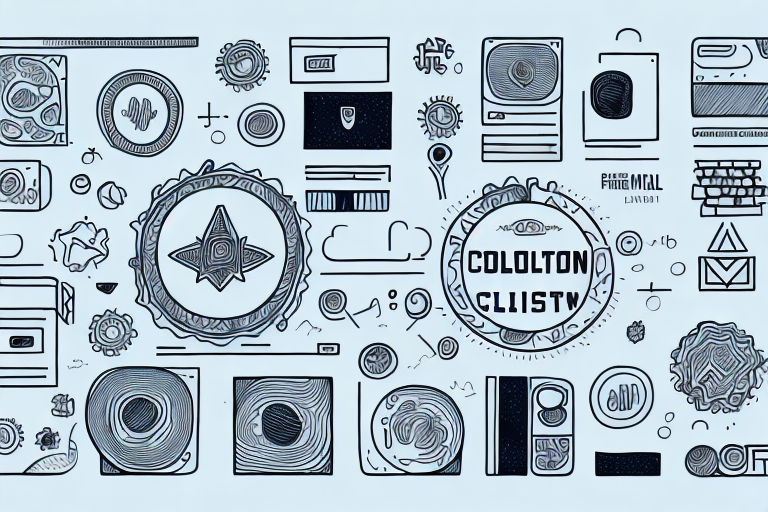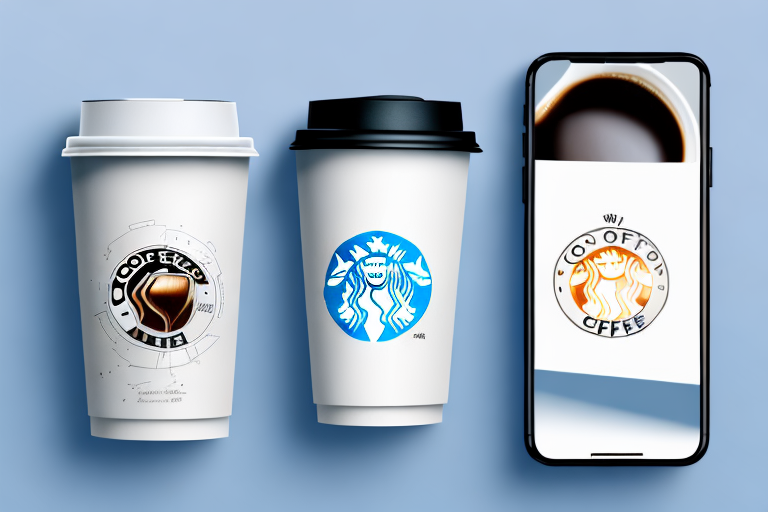In today's fast-paced marketing landscape, collaboration is no longer just a nice-to-have; it's become a necessity for successful teams. The days of working in silos and relying solely on individual expertise are long gone. To stay competitive and deliver impactful results, marketing teams must embrace collaboration and invest in the right tools to support their efforts.
Understanding the Need for Collaboration in Marketing
Marketing is a multifaceted discipline that requires input and collaboration from various team members. From strategizing and planning campaigns to executing and analyzing results, it takes a collective effort to achieve success. Collaboration allows teams to pool their diverse skills, knowledge, and perspectives to tackle complex challenges and achieve shared goals.
Collaboration in marketing is not just about working together; it is about leveraging the power of teamwork to drive innovation and creativity. When individuals from different backgrounds and expertise come together, they bring unique insights and ideas to the table. This diversity of thought can lead to breakthrough strategies and campaigns that resonate with the target audience.
Furthermore, collaboration fosters cross-functional communication within marketing teams. By breaking down silos and encouraging open dialogue, team members can gain a better understanding of each other's roles and responsibilities. This shared knowledge promotes a sense of unity and enables smoother collaboration, as everyone is aligned towards a common vision.
The Role of Collaboration in Successful Marketing
Effective collaboration goes beyond simply working together; it fosters creativity, encourages cross-functional communication, and ensures that everyone is aligned towards a common vision. By collaborating, marketing teams can leverage each other's strengths, brainstorm innovative ideas, and streamline workflows to deliver cohesive and impactful campaigns.
One of the key benefits of collaboration in marketing is the ability to tap into the collective intelligence of the team. When individuals with different skill sets and perspectives collaborate, they can generate a wider range of ideas and solutions. This diversity of thought not only leads to more creative and innovative campaigns but also helps in identifying potential blind spots and avoiding groupthink.
Collaboration also plays a crucial role in ensuring that marketing efforts are consistent and aligned with the overall brand strategy. By involving various team members in the planning and execution process, organizations can ensure that all aspects of the campaign, from messaging to design, are cohesive and in line with the brand's values and objectives.
Challenges in Marketing Collaboration
While collaboration offers numerous benefits, it also comes with its fair share of challenges. Miscommunication, lack of clarity, and conflicting priorities can hinder the collaborative process. Additionally, coordinating multiple team members, especially when working remotely or across different time zones, can be a logistical nightmare. To overcome these challenges, marketing teams need the right collaboration tool.
A robust collaboration tool can help streamline communication and ensure that all team members are on the same page. Features like real-time messaging, task assignment, and file sharing enable seamless collaboration, regardless of the physical location of team members. These tools also provide a centralized platform where team members can access project updates, share feedback, and track progress, eliminating the need for lengthy email chains and scattered communication.
Furthermore, establishing clear roles and responsibilities within the team is essential for effective collaboration. When everyone knows their specific tasks and deliverables, it reduces confusion and minimizes the risk of duplication or missed deadlines. Regular check-ins and status updates can also help keep everyone accountable and ensure that the collaborative efforts stay on track.
In conclusion, collaboration is a fundamental aspect of successful marketing. By embracing collaboration, marketing teams can tap into the collective intelligence of their members, foster creativity, and deliver cohesive campaigns that drive results. While challenges may arise, the right collaboration tools and clear communication can help overcome these obstacles and unlock the full potential of teamwork in marketing.
Key Features of an Effective Collaboration Tool
An effective collaboration tool should provide features that facilitate seamless communication, task management, and file sharing among team members. Let's explore the key features to look for:
Real-Time Communication Capabilities
One of the most crucial aspects of collaboration is real-time communication. A collaboration tool should offer features like instant messaging, video conferencing, and screen sharing to ensure teams can connect and collaborate effortlessly, regardless of their location.
Instant messaging allows team members to have quick and direct conversations, eliminating the need for lengthy email threads. It enables real-time discussions, brainstorming sessions, and problem-solving. With video conferencing, team members can have face-to-face meetings, even if they are in different parts of the world. This fosters a sense of connection and enhances collaboration.
Screen sharing is another valuable feature that allows team members to share their screens with others. This is particularly useful when working on complex tasks that require visual explanations or when providing remote support. It enables team members to collaborate effectively and troubleshoot issues together.
Task Management and Organization
To keep everyone on track and accountable, a collaboration tool should have robust task management capabilities. It should allow team members to create, assign, and track tasks, set deadlines, and visualize project timelines. This helps to ensure that everyone is aware of their responsibilities and progress.
Task management features should include the ability to create task lists, assign tasks to specific team members, and set priorities. It should also provide notifications and reminders to keep everyone informed about upcoming deadlines and important milestones. Visualizing project timelines allows team members to see the overall progress of the project and identify any bottlenecks or delays.
Furthermore, an effective collaboration tool should offer features like task dependencies, where tasks can be linked to one another, ensuring that tasks are completed in the correct order. This helps to maintain a smooth workflow and prevents any unnecessary delays.
File Sharing and Document Collaboration
Marketing teams often need to share and collaborate on documents, such as creative assets, briefs, and reports. A collaboration tool should provide a secure and organized platform for sharing and editing files, enabling seamless collaboration and version control.
File sharing features should allow team members to upload and share files with ease. It should provide options for different access levels, ensuring that only authorized individuals can view or edit sensitive documents. Version control is essential to track changes made to documents, allowing team members to revert to previous versions if needed.
Document collaboration features should enable multiple team members to work on the same document simultaneously. This allows for real-time collaboration, where team members can provide feedback, make edits, and see changes in real-time. Commenting features also facilitate discussions and streamline the review process.
Additionally, a collaboration tool should integrate with popular file storage platforms, such as Google Drive or Dropbox, to provide seamless access to files and ensure that all documents are stored in a centralized location.
Evaluating the Best Collaboration Tools
With a plethora of collaboration tools available in the market, it can be overwhelming to choose the right one for your marketing team. When evaluating collaboration tools, consider the following criteria:
Criteria for Choosing the Right Tool
Consider factors such as ease of use, scalability, integration capabilities with existing tools, and data security. It's essential to choose a tool that aligns with your team's specific needs and integrates seamlessly into your existing workflow.
Reviewing Top-Rated Collaboration Tools
To help you navigate the vast landscape of collaboration tools, we have reviewed some of the top-rated options:
Tool 1: This tool offers robust communication features and easy-to-use task management capabilities. It also provides integrations with popular marketing software.
Tool 2: Known for its intuitive interface and powerful document collaboration features, this tool is ideal for marketing teams that heavily rely on file sharing and editing.
Tool 3: This tool stands out for its comprehensive project management capabilities, making it an excellent choice for marketing teams working on complex campaigns.
Implementing Your Chosen Collaboration Tool
Once you have selected the collaboration tool that best fits your team's requirements, it's time to implement it effectively. Consider the following steps:
Training Your Team on the New Tool
Provide comprehensive training to your team members to ensure they understand how to use the collaboration tool effectively. Offer hands-on workshops and resources to familiarize them with its features and functionalities.
Ensuring Smooth Transition and Adoption
During the transition phase, it's crucial to have a well-defined plan in place. Communicate the benefits of the new tool, address any concerns or resistance, and provide ongoing support to encourage adoption. Collaboration should become second nature to your team.
Measuring the Impact of Your Collaboration Tool
Implementing a collaboration tool is only half the battle; measuring its impact is equally important. Here are two key metrics to track:
Tracking Productivity and Efficiency
Keep an eye on how your team's productivity and efficiency improve after implementing the collaboration tool. Track metrics such as project completion time, task turnaround, and the number of simultaneous projects the team can handle.
Assessing Improvement in Team Collaboration
Evaluate how well your team is collaborating after adopting the tool. Are they communicating more effectively? Are they using the tool's features to streamline tasks and enhance collaboration? Look for qualitative improvements in teamwork and communication.
In conclusion, choosing the right collaboration tool is essential for marketing teams looking to maximize their efficiency and deliver exceptional results. By understanding the need for collaboration, evaluating key features, implementing the tool effectively, and measuring its impact, marketing teams can empower themselves to collaborate seamlessly and stay ahead in today's competitive landscape.
Collab with brands and creators. Request your invite at collabs.io



